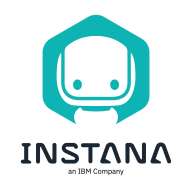

Nagios XI and Instana Infrastructure Monitoring compete in the IT monitoring category. While Nagios XI is preferred for its pricing and support, Instana provides advanced features, making it attractive to those focused on capabilities.
Features: Nagios XI provides customizable dashboards, comprehensive alerting, and flexibility in foundational monitoring. Instana Infrastructure Monitoring differentiates itself with automation, AI-powered analytics, and real-time data insights, offering enhanced functionality.
Room for Improvement: Nagios XI could improve by integrating automation features, offering more modern data analysis tools, and simplifying customization processes. Instana Infrastructure Monitoring could enhance cost-efficiency, improve manual configuration options for specific needs, and broaden support for customized alerting.
Ease of Deployment and Customer Service: Nagios XI follows a traditional deployment model requiring more manual configuration but benefits from strong customer support. Instana Infrastructure Monitoring offers a SaaS model with straightforward deployment, fast setup, and modern support channels.
Pricing and ROI: Nagios XI offers a more cost-effective setup, potentially leading to quicker ROI for organizations mindful of their budget. Instana Infrastructure Monitoring involves higher setup costs but provides ROI through its advanced capabilities and efficiencies in monitoring.
| Product | Market Share (%) |
|---|---|
| Nagios XI | 3.5% |
| Instana Infrastructure Monitoring | 0.5% |
| Other | 96.0% |


| Company Size | Count |
|---|---|
| Small Business | 22 |
| Midsize Enterprise | 17 |
| Large Enterprise | 21 |
Instana ensures that your application delivery organization has the data, visibility and information they need to manage the performance of critical business applications across the DevOps lifecycle. Built to handle the dynamic nature of containerized, microservice architectures, Instana automates infrastructure and application monitoring helping you to ensure the performance and quality of custom applications and accelerate your CI/CD cycle.
Nagios XI provides monitoring of all mission-critical infrastructure components, including applications, services, operating systems, network protocols, systems metrics, and network infrastructure. Third-party add-ons provide tools for monitoring virtually all in-house and external applications, services, and systems.
Nagios XI uses a powerful Core 4 monitoring engine that provides users with the highest levels of server monitoring performance. This high degree of performance enables nearly limitless scalability and monitoring powers.
With Nagios XI, stakeholders can check up on their infrastructure status using the role-based web interface. Sophisticated dashboards enable access to monitoring information and third-party data. Administrators can easily set up permissions so users can only access the infrastructure they are authorized to view.
Nagios XI Benefits and Features
Some of the benefits and top features of using Nagios XI include:
Reviews from Real Users
Nagios XI stands out among its competitors for a number of reasons. Several major ones are its integration options and monitoring abilities, as well as its alerting features.
David P., a senior DevOps engineer at EML Payments Ltd, writes, “We use Nagios as a network discovery tool. We use Nagios to maintain our uptime statistics and to monitor our services. It has allowed us to be much more sophisticated in our monitoring and alerting.”
An IT-OSS manager at a comms service provider notes, “Nagios XI has a custom API feature, and we can expose custom APIs for our integration. This is a great feature.”
We monitor all IT Infrastructure Monitoring reviews to prevent fraudulent reviews and keep review quality high. We do not post reviews by company employees or direct competitors. We validate each review for authenticity via cross-reference with LinkedIn, and personal follow-up with the reviewer when necessary.